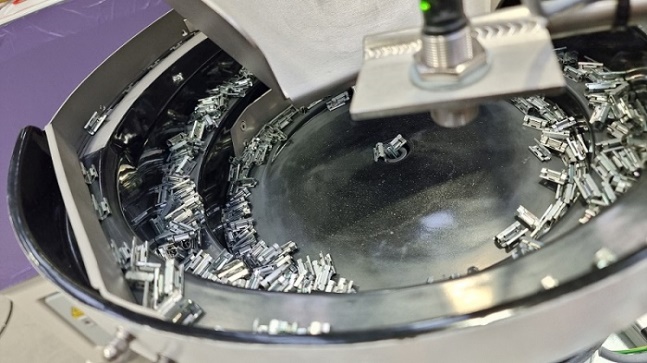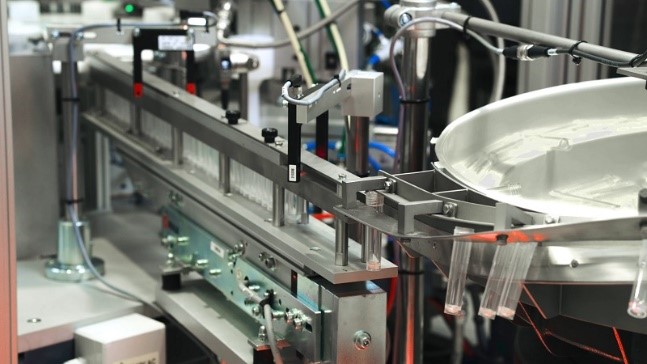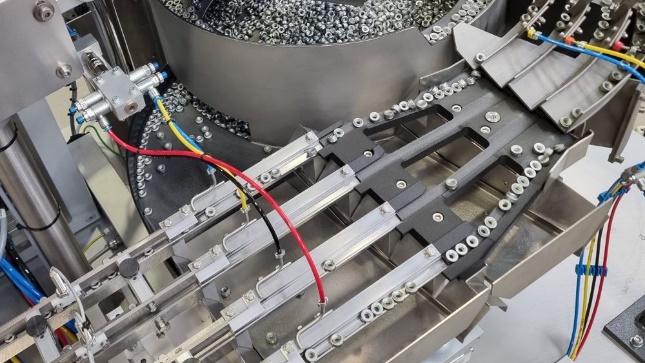In modern manufacturing, efficiency and precision are crucial for maintaining high productivity and minimising waste. One of the key concepts that help achieve these goals is the implementation of poka-yoke devices.
Coming from Japanese, “poka-yoke” translates to “mistake-proofing,” a methodology designed to prevent errors in manufacturing processes. When applied to bowl feeder systems, poka-yoke devices significantly enhance reliability and accuracy, ensuring that only correctly orientated and correctly positioned parts move forward in the production line, as well as identifying and preventing incorrectly loaded parts from leaving the feed system.
Understanding Bowl Feeder Systems
Bowl feeder systems are essential in automated assembly lines, responsible for orientating and delivering parts to the next phase of production. These systems consist of a vibrating bowl that moves parts in a specific direction, using various mechanical features to ensure the parts are orientated correctly before they leave the bowl. However, the complexity of part shapes and the high speed of production can lead to errors, with misaligned or incorrectly orientated parts potentially slipping through the system. This is where poka-yoke comes into play, ensuring that such errors are caught and corrected before they impact the assembly process.
The Role of Poka-Yoke in Bowl Feeder Systems
Poka-yoke devices can be designed as an integral part of bowl feeders to prevent such errors, ensuring that only correctly orientated parts advance to the next production stage. These devices can take various forms, depending on the nature of the parts being handled and the specific requirements of the assembly process. Here are some common poka-yoke techniques used in bowl feeder systems:
1. Mechanical Barriers and Guides
Simple yet effective, mechanical barriers are placed along the path within the bowl feeder to reject parts that are incorrectly orientated. Custom-designed tracks or chutes within the bowl feeder can be tailored to the specific shape and dimensions of the parts being handled. These tracks are designed to allow only correctly orientated parts to proceed while misaligned parts are automatically redirected back into the bowl.


2. Sensors and Detection Systems
Vision, colour, or optical sensors can be installed at critical points in the feeder system to detect improperly orientated parts. If a part fails to meet the orientation criteria, the sensor can trigger a mechanism to reject it or return it to the bowl for another pass. These systems can be highly sophisticated, capable of detecting minute differences in part orientation, colour, or size.

3. Physical Stoppers and Ejectors
Physical stoppers can be placed at the exit of the bowl feeder, which will allow only parts that are in the correct orientation to pass through. Parts that are not in the correct orientation are stopped and redirected back into the system. Ejectors, on the other hand, physically remove the incorrect parts from the feeder system altogether.

4. Error Proofing by Design
The parts themselves can be designed with features that make incorrect orientation virtually impossible. This design approach integrates poka-yoke principles directly into the product design, ensuring that the parts can only be fed correctly.
Benefits of Implementing Poka-Yoke in Bowl Feeder Systems
The incorporation of poka-yoke devices in bowl feeder systems offers several significant advantages:
- Reduced Defects: By ensuring that only correctly orientated parts reach the next stage of production, poka-yoke devices minimize the likelihood of defects, leading to higher-quality products.
- Increased Efficiency: Poka-yoke mechanisms reduce the need for manual inspections and corrections, allowing for a smoother and faster production process.
- Cost Savings: Reducing errors and defects translates to lower waste, less rework, and fewer production stoppages, all of which contribute to cost savings.
- Enhanced Safety: By preventing incorrect parts from advancing, poka-yoke devices also help avoid potential safety hazards in the assembly process, protecting both equipment and workers.
Conclusion
The application of poka-yoke devices in bowl feeder systems offers a powerful solution to the common challenges faced in automated assembly lines. By integrating mistake-proofing techniques, manufacturers across various industries can ensure that only correctly orientated and positioned parts advance to the next production stage. The case studies presented demonstrate the versatility and effectiveness of poka-yoke in different manufacturing environments, from automotive to plastics, pharmaceuticals, and industrial fasteners.